The three whisketeers
June 16th, 2008, by Francesca
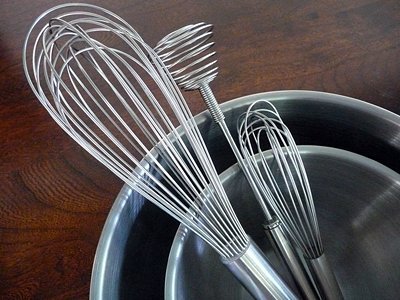
My culinary arsenal includes three whisks, that I use differently for specific tasks not because of training, but personal preference.
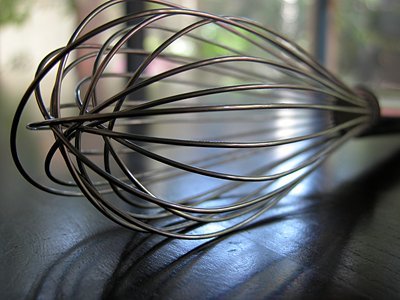
My school kit came with a large oval whisk – the kind you most often think of when hearing the word "whisk" – so I assume this makes it the de facto recommendation of Le Cordon Bleu. Or maybe it's the deal they have with their chosen supplier (yes, I am cynical), who knows. Regardless, if you had to have just one whisk, you'd probably want this one, for its versatility.
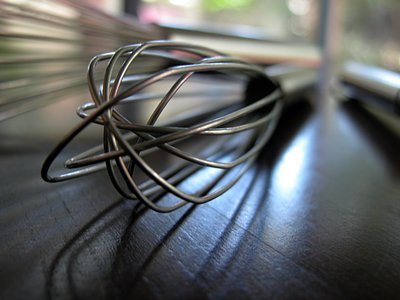
This smaller whisk I like for stirring reduction sauces, béchamel, and pan gravies.
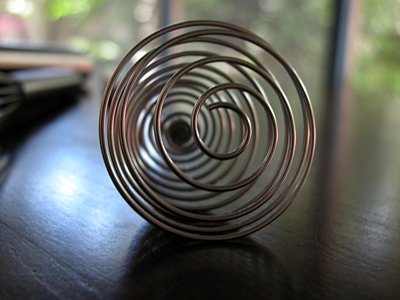
And this one… well, I'd like to tell you that I had a clear plan when I bought it, but the truth is that I saw it one evening while shopping for a chinois at Sur La Table, and bought it on an impulse. The guy working the late shift that day told me that it's good for eggs and I took his word for it. As it turns out, some of the young sales people at Sur La Table are graduates from my school (hmm… what does that say about job prospects?).
After trying it out, I love it to get emulsions started. For me it makes the starting phase of sauces such as Hollandaise and mayonnaise easier and faster, then I switch to the large oval whisk, especially if I am making a good size batch.
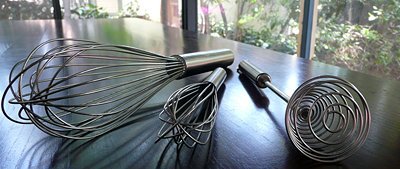
After a few weeks of culinary school, my take on things is that you'll find as many arguments in favor of a particular tool as you can find against. It really comes down to what works for you. You may not be aware of why you prefer something, but I bet you have a good reason for it: the size of your hands, right- or left-handedness, the task to be performed, the amount of food being processed, the size of another tool or container, old habits…
So, don't take my word for any of this and try things out for yourselves!
Sharpie, sharpissimo
June 10th, 2008, by Francesca
When you use your knives on a daily basis for a variety of cuts, your blades get dull pretty fast. Our school kit includes several knives and a honing steel and I soon found out that the steel only helps with straightening blades, but has no effect on sharpness. There are steels that do sharpen as well, but that's not what we got, so I had to get a sharpening stone.
In school we have an oil whetstone with three sides: coarse, medium, and fine. You oil them with industrial oil and sharpen your knives first on the coarse stone, then the medium and finally the fine one. When I looked for a similar stone in the neighborhood's cooking stores, I couldn't find it. The best I could find was a two-grit water whetstone, and that's what I got.
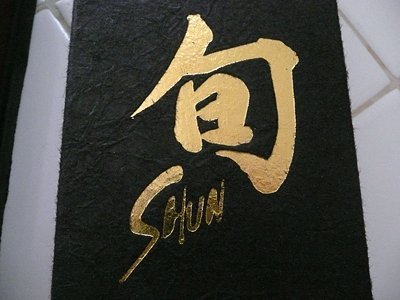
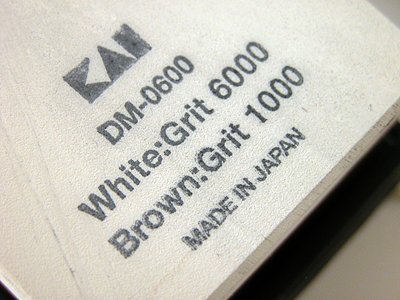
My whetstone is a Japanese model including two stone grades – medium and fine – and it works with water rather than oil, which is much more convenient as water is a lot easier to come by than industrial oil.
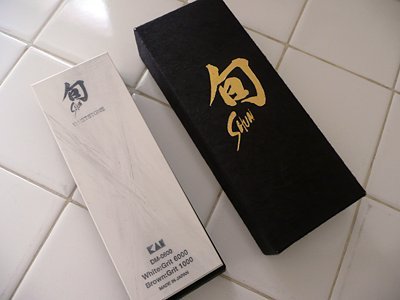
First, you soak the stone in water for about ten minutes. Then you start sharpening your knife on the medium stone by sliding it across the stone in a slightly circular motion. First in one direction, then the other, for an equal number of passes to keep things balanced between the two sides of the blade.
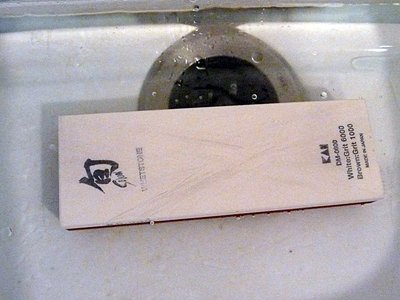
Opinions differ about the specific techniques, but my feeling is that it doesn't matter much which way you go as long as you maintain things equal between the two sides. Some people alternate the right-to-left and left-to-right motion constantly, while others execute all the motions in one direction first, followed by the same number of motions in the opposite direction.
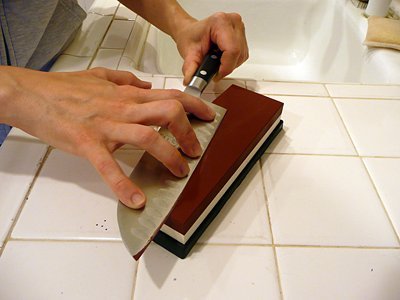
I wish I could have found a stone with three grits, but going with water models means that I would have to buy another double stone (please, feel free to correct me if you know different), most likely with coarse and medium grits. Since these stones don't come cheaply ($90 and higher) I think I'm going to stick with just one for now.

Depending on the kind/brand of knife you have, you are supposed to sharpen the knife at a specific angle, or so I was told at Sur La Table in Pasadena. Others think that the angle is a function of how you hold your knife. Me, I don't worry too much about precise angle measurements and I hold my knives at an angle that feels comfortable to me, which happens to be quite close to the grinding stone, probably less than 20º.

So far, I am sharpening my knives about once a week and try to hone them with the steel daily, but I am not religious about it.
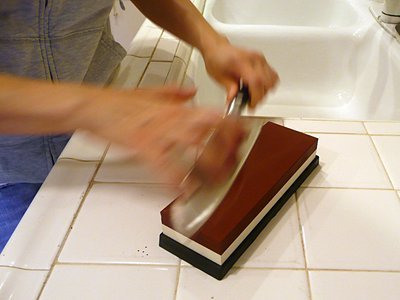
How do you know if your knife is sharp? Ha! Good question.

My chef from Intro 1 (Chef Gore) had several tips:
- Let the knife fall (gently, obviously) on a fingernail. If it "catches", the blade is sharp.
- Try the knife on a tomato. If it slices the skin easily, the knife is sharp.
- Try to slice a piece of paper (chef Gore demonstrated this with a sheet of parchment paper). If the knife cuts the paper on the first pass, it's sharp.
My favorite is the tomato test: it saves my fingernails and seems easier to assess than the paper test.
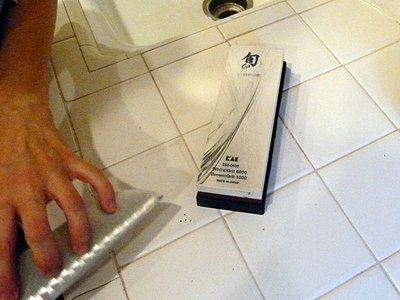
Swish!
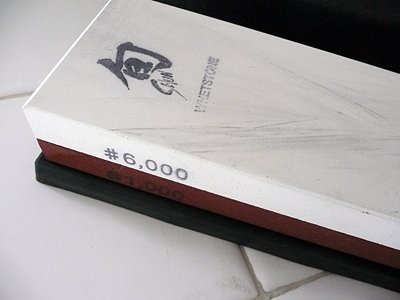
Kitchen Toys
May 26th, 2008, by Francesca
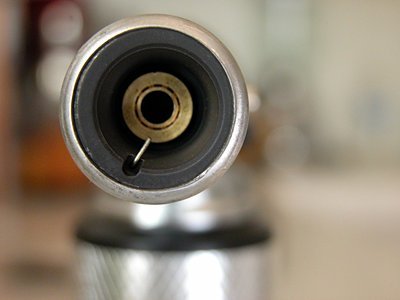
Ours is a geek household and we love gadgets. In recent weeks we've been shopping for kitchen toys, er… tools, so I can practice at home some of the dishes I cook in class. I am not talking about those unitaskers frowned upon by Alton Brown; who needs a pineapple slicer or an egg separator? I am talking about real tools that can be used for several preparations and really make life easier in the kitchen.
Well, with the possible exception of this one, but can you blame me? Shouldn't an aspiring cook be allowed to flame her crème brûlée? I haven't gotten around to try this yet because I've been cooking other things and even with a long weekend there never seems to be enough time to get everything done.

This little whisk is great for sauces. Not that I care for those classic French sauces, but I bought this one before finals last term to practice Hollandaise and Béarnaise. And after finals I used it to make my first mayo.
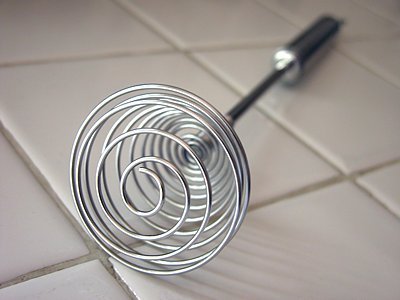
This strainer is a chinois. We use it almost daily in class to strain clarified butter, stock, consommé, ground pepper, you name it… if you want something strained as finely as possible a chinois is your best choice. For consommé we even put a couple of coffee filters inside it.
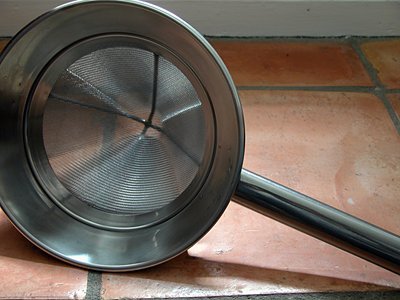
It looks a lot like a China cap, but its mesh is finer. This one is from Italy and I bought it at Sur La Table. There were two sizes, this being the the smaller of the two.
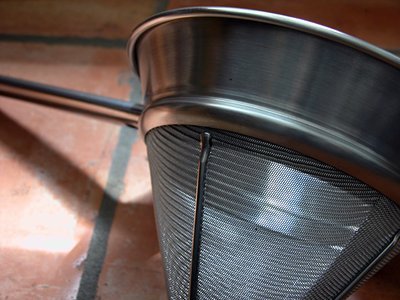
The pestle is a different brand but fits perfectly.
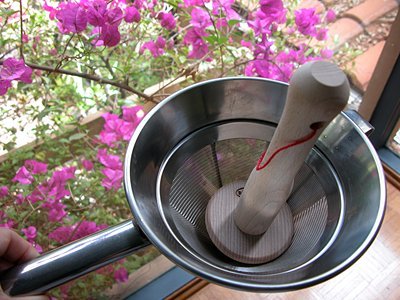
By the end of the year, our kitchen should be well equipped. :)



